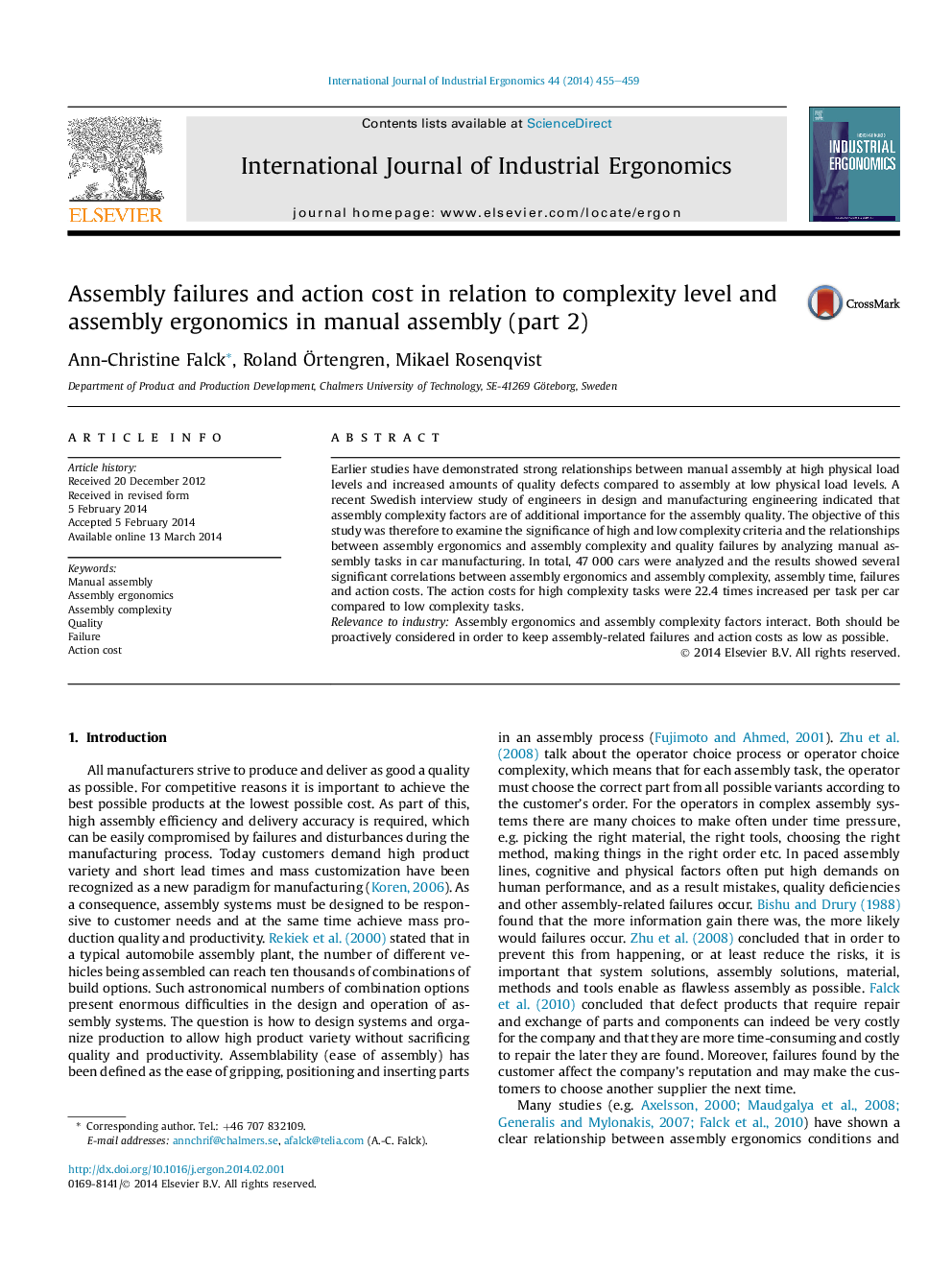| Article ID | Journal | Published Year | Pages | File Type |
|---|---|---|---|---|
| 1096109 | International Journal of Industrial Ergonomics | 2014 | 5 Pages |
•A model for assessment of assembly complexity in manual assembly was developed.•The higher the level of complexity, the more errors will occur.•Assembly ergonomics and complexity are interrelated. Both affect the failure rate.•The highest complexity level resulted in 22 times increased action costs/task/car.
Earlier studies have demonstrated strong relationships between manual assembly at high physical load levels and increased amounts of quality defects compared to assembly at low physical load levels. A recent Swedish interview study of engineers in design and manufacturing engineering indicated that assembly complexity factors are of additional importance for the assembly quality. The objective of this study was therefore to examine the significance of high and low complexity criteria and the relationships between assembly ergonomics and assembly complexity and quality failures by analyzing manual assembly tasks in car manufacturing. In total, 47 000 cars were analyzed and the results showed several significant correlations between assembly ergonomics and assembly complexity, assembly time, failures and action costs. The action costs for high complexity tasks were 22.4 times increased per task per car compared to low complexity tasks.Relevance to industryAssembly ergonomics and assembly complexity factors interact. Both should be proactively considered in order to keep assembly-related failures and action costs as low as possible.
